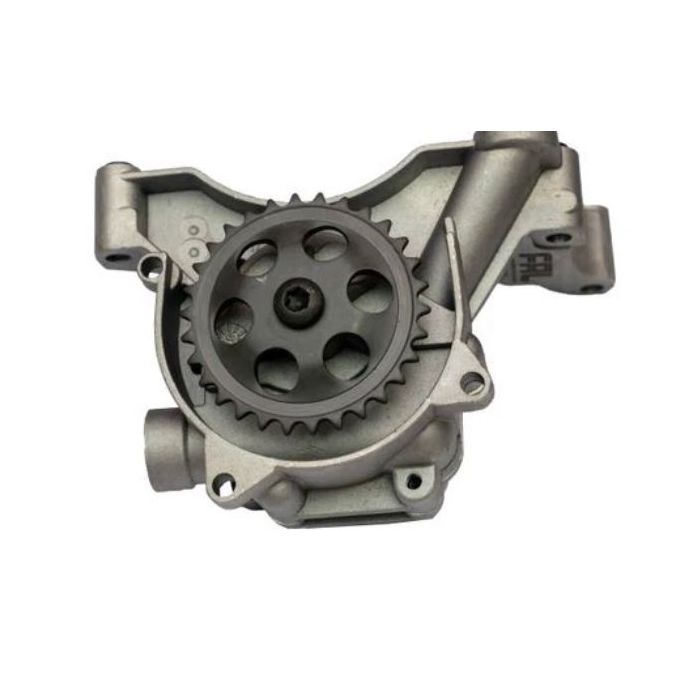Maintain consistent power with a high-performance clp engine.
Maintain consistent power with a high-performance clp engine.
Blog Article
Exactly How a Clp Engine Can Boost Effectiveness in Numerous Industries
The development of CLP engines marks a significant change in operational performance across different sectors, driven by their capability to maximize fuel intake and decrease downtime. Industries such as manufacturing and logistics stand to gain substantially from their robust style and regular power output, which guarantee to streamline procedures and enhance efficiency. As organizations increasingly prioritize sustainability along with efficiency, the role of CLP engines comes to be a lot more essential. What stays to be seen is just how these advancements will shape the future landscape of commercial procedures and their effect on more comprehensive economic patterns (clp engine).
Summary of CLP Engines
CLP engines, or Continuous Fluid Propellant engines, stand for a considerable improvement in propulsion innovation, particularly for space applications. These engines make use of a constant feed system that permits the sustained expulsion of propellant, bring about boosted performance and performance compared to typical solid or hybrid propulsion systems. By maintaining a consistent flow of liquid propellant, CLP engines can accomplish extra precise drive control, which is critical for maneuvering spacecraft in various goal circumstances.
The layout of CLP engines integrates advanced products and ingenious fuel management systems. clp engine. This results in lowered weight and raised integrity, vital factors for long-duration space missions. The constant procedure reduces the danger of burning instability, a common challenge in conventional rocket engines.

Benefits in Production
The production of Continuous Liquid Propellant (CLP) engines provides a number of remarkable benefits that enhance both efficiency and cost-effectiveness. One of the primary advantages is the streamlined production process, which lowers the complexity related to typical propulsion systems. By using fluid propellant, producers can achieve better accuracy in engine performance, resulting in enhanced power outcome and minimized waste.
Furthermore, CLP engines help with a greater level of modularity, enabling for easier integration into various production lines. This versatility can dramatically reduce preparations and boost total operational flexibility. Making use of CLP innovation additionally often tends to minimize the demand for comprehensive maintenance because of fewer moving parts, which converts into minimized downtime and operational prices.

Applications in Logistics
Leveraging Continuous Liquid Propellant (CLP) engines in logistics uses significant benefits in operational effectiveness and reliability. These engines supply a durable option for various transport needs, allowing the seamless motion of goods throughout large ranges. The inherent layout of CLP engines enables for regular power result, which equates right into smoother and a lot more foreseeable transport routines.
One of the vital applications of CLP engines in logistics is in heavy-duty freight transport, where they can drive both ground and airborne lorries. Their capability to keep high efficiency under varying load problems makes certain that distribution timelines are met, therefore enhancing customer satisfaction. In addition, CLP engines can be integrated into automated logistics systems, assisting in real-time tracking and optimizing path preparation.
Moreover, the durability of CLP engines decreases upkeep downtime, permitting logistics firms to maximize their operational capabilities. This is specifically beneficial in warehousing procedures, where efficiency in dealing with and moving items is critical. As logistics remains to progress, the integration of CLP engines stands for a forward-thinking approach that not just improves performance yet likewise supports the sector's growing needs for reliability and speed.
Influence On Energy Performance
How do Constant click to investigate Fluid Propellant (CLP) engines enhance power effectiveness in transportation? CLP engines make use of a regular flow of liquid fuel, optimizing combustion processes and keeping a stable thrust result. This layout reduces power losses connected with standard burning engines, where fuel distribution why not try here can differ and result in inadequacies.
The continual procedure of CLP engines enables for a more reliable thermal cycle, causing higher specific impulse contrasted to traditional engines. clp engine. This converts to minimized gas consumption for the same quantity of job done, considerably reducing functional expenses throughout numerous transport fields, including aviation and maritime industries
Additionally, the capacity of CLP engines to keep optimum efficiency under differing lots problems minimizes the demand for constant velocity and slowdown, additionally boosting gas performance. Boosted power effectiveness not just adds to cost savings but additionally leads to reduce greenhouse gas discharges, aligning with worldwide sustainability goals.
Future Trends and Innovations
Emerging advancements in Continual Fluid Propellant (CLP) engine innovation pledge to transform the landscape of transportation efficiency and sustainability. As markets pivot toward greener alternatives, CLP engines stand at the center, incorporating ingenious materials and layout methods that improve performance while lessening environmental effect.
One of one of the most encouraging trends is the adoption of hybrid systems that incorporate CLP engines with sustainable energy resources. This synergy can optimize fuel intake and minimize discharges, straightening with worldwide sustainability goals. Advancements in computational liquid dynamics (CFD) are assisting in the design of more aerodynamically reliable engines, leading to decreased drag and boosted fuel performance.
Furthermore, the advancement of smart tracking systems is established to enhance functional efficiencies. These systems utilize a knockout post information analytics and IoT modern technology to maximize engine efficiency in real-time, making sure that the engines operate within their most efficient specifications.
As research study proceeds to check out alternate propellant solutions-- such as biofuels and synthetic gas-- the future of CLP engines looks promising. By harnessing these developments, sectors can not only enhance their performance but likewise add dramatically to a cleaner, more sustainable future in transportation.
Verdict
To conclude, CLP engines represent a considerable improvement in performance across several markets. Their capacity to maximize gas consumption and reduce operational expenses, integrated with a constant feed system, improves power result and functional integrity. The assimilation of innovative products and less relocating components decreases upkeep needs, while placement with sustainability objectives placements CLP engines as a pivotal innovation for the future. Continued development in this field promises further improvements in efficiency and environmental performance.
Report this page